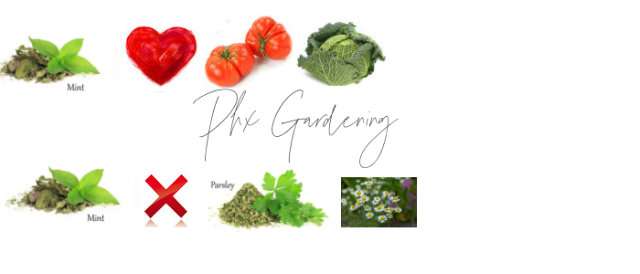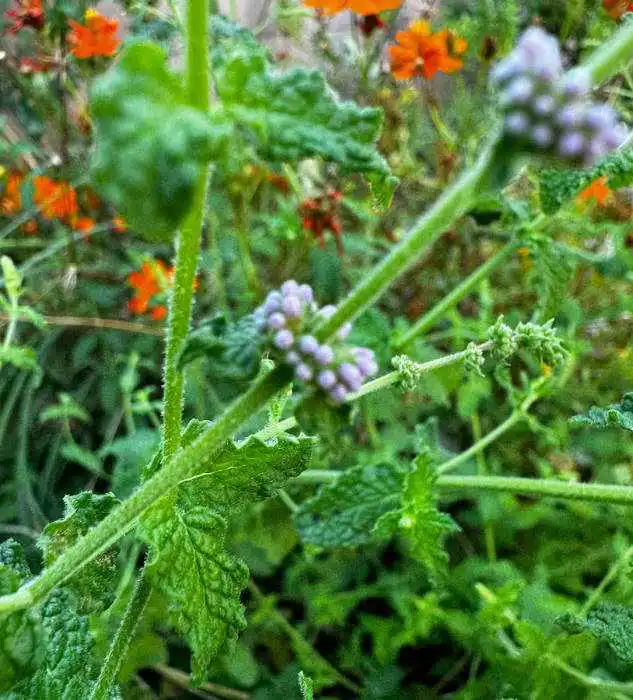Find out how easy it is to grow mint, a versatile and aromatic herb that adds a fresh burst of flavor to both food and drinks.
Whether you’re an experienced gardener or just starting out, cultivating mint is easy and rewarding, making it a perfect addition to any garden or kitchen windowsill.
There are hundreds of mints to choose from, however the two most popular mints to grow are peppermint and spearmint. They are from the plant family Lamiaceae.
Peppermint has the most minty taste of the two and can be used in tea. Spearmint is sweeter in taste. Both are easy to grow in a Phoenix herb garden.
This post may contain affiliate links. Please read our disclosure policies.
Phoenix Gardening Steps: Grow Mint
- When and how to plant mint
- What grows well near mint and what doesn’t?
- How to care for mint
- Harvesting mint- When is the ideal time to pick mint?
Types of Mint to Grow
Most gardening centers will offer peppermint (Mentha peperita) and spearmint (Mentha spicata) as these are the two most popular mints. I came across some strawberry mint (Mentha spicata subsp. citrata ‘strawberry’) and orange mint (Mentha piperita citrata) and they had such a lovely fruity scent I added them to my garden and also keep some in my house.
When to Plant Mint
Mint is a perennial cool season herb. It prefers cooler temperatures, so they do enjoy afternoon shade. Mint can grow one to two feet in height. It spreads rapidly and can quickly take over a garden if it is allowed to. If planting more than one plant provide at least 18 inches between plants.
This culinary herb is perennial in gardening zones 4-11. If it gets too cold it will die back in the winter and come back in the spring.
Mint can be transplanted to your Phoenix garden or in gardening zone 9b in the months of February, March, April and October.
How to Plant Mint
Seeds should be sown under 1/4 inch of soil and started indoors. Seedlings will start to sprout in two to three weeks.
Due to the length of time it takes for mint to reach maturity mint is often grown from a cutting rather than seeds.
Depending on the variety of mint, this herb can grow anywhere from 6″ to 24″ in height and spread 8″ to 18″.
Mint is a vigorous plant and will quickly take over the garden. Due to this it makes a great container plant.
Companion Plants for Mint
Both tomato and cabbage plants benefit from being planted near mint. Don’t plant near parsley or chamomile.

How to Care for Mint
Light Requirements: Mint needs full sun to partial shade or about 4- 6 hours of sun a day. Prefers south or west facing.
Soil Requirements: Prefers rich fertile soil. Mint prefers slightly acidic pH. The soil pH range of 6-7 is ideal.
Water Requirements: Mint plant like consistent moisture. Water three times per week or enough to keep the soil moist.
I transplanted mint to our garden in December (gardening zone 9b). The mint planted on east facing wall bolted once the temperature increase.
When to Harvest Mint
Mint takes about 90 days from seed to harvest. Purchasing transplants will mean you can harvest sooner. After cutting this herb plants will have new growth.
Mint is very forgiving and grows rapidly. Its versatility make it a favorite for teas, desserts, and even savory dishes.
The strawberry mint has pretty lavender spire flowers the bees love.



